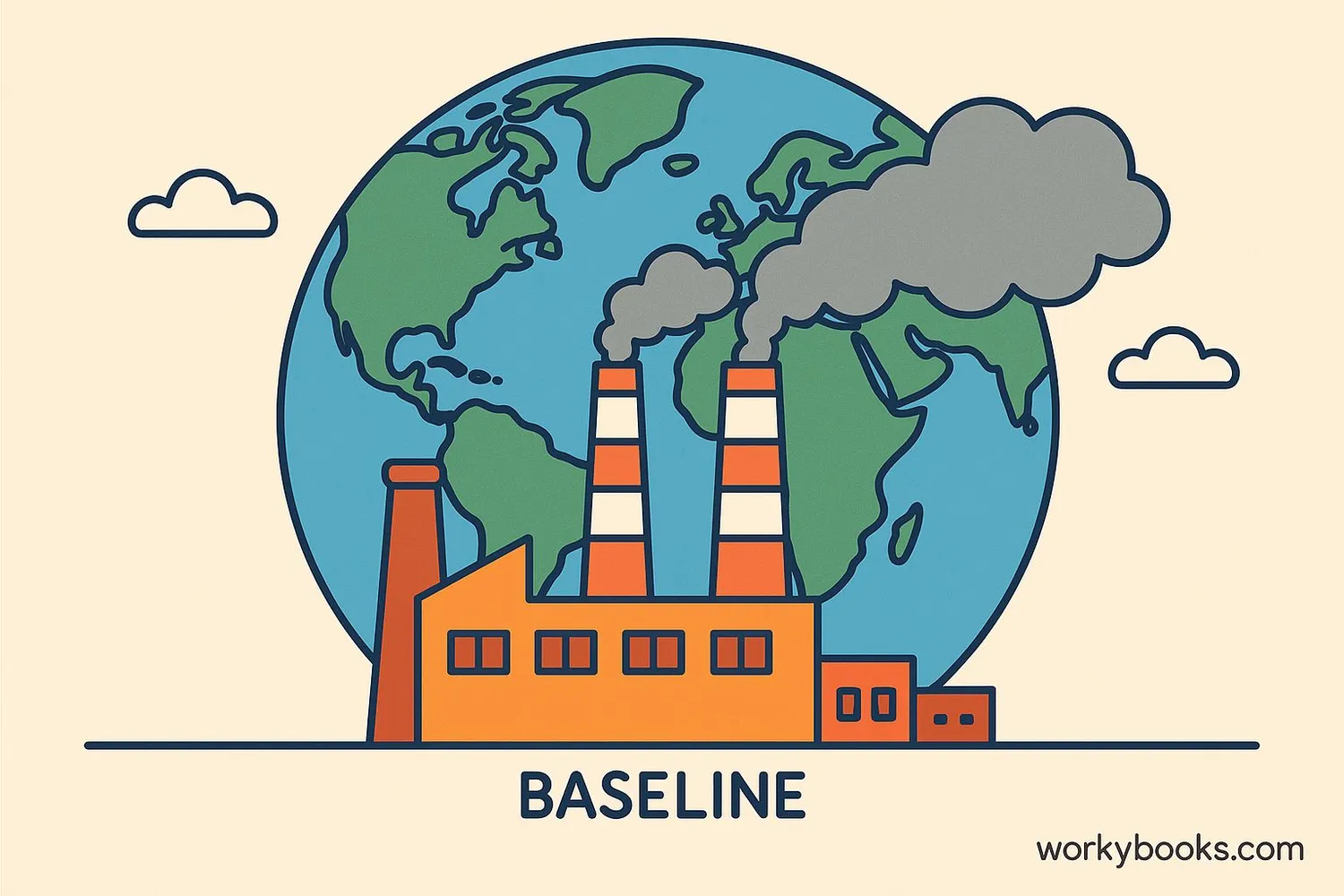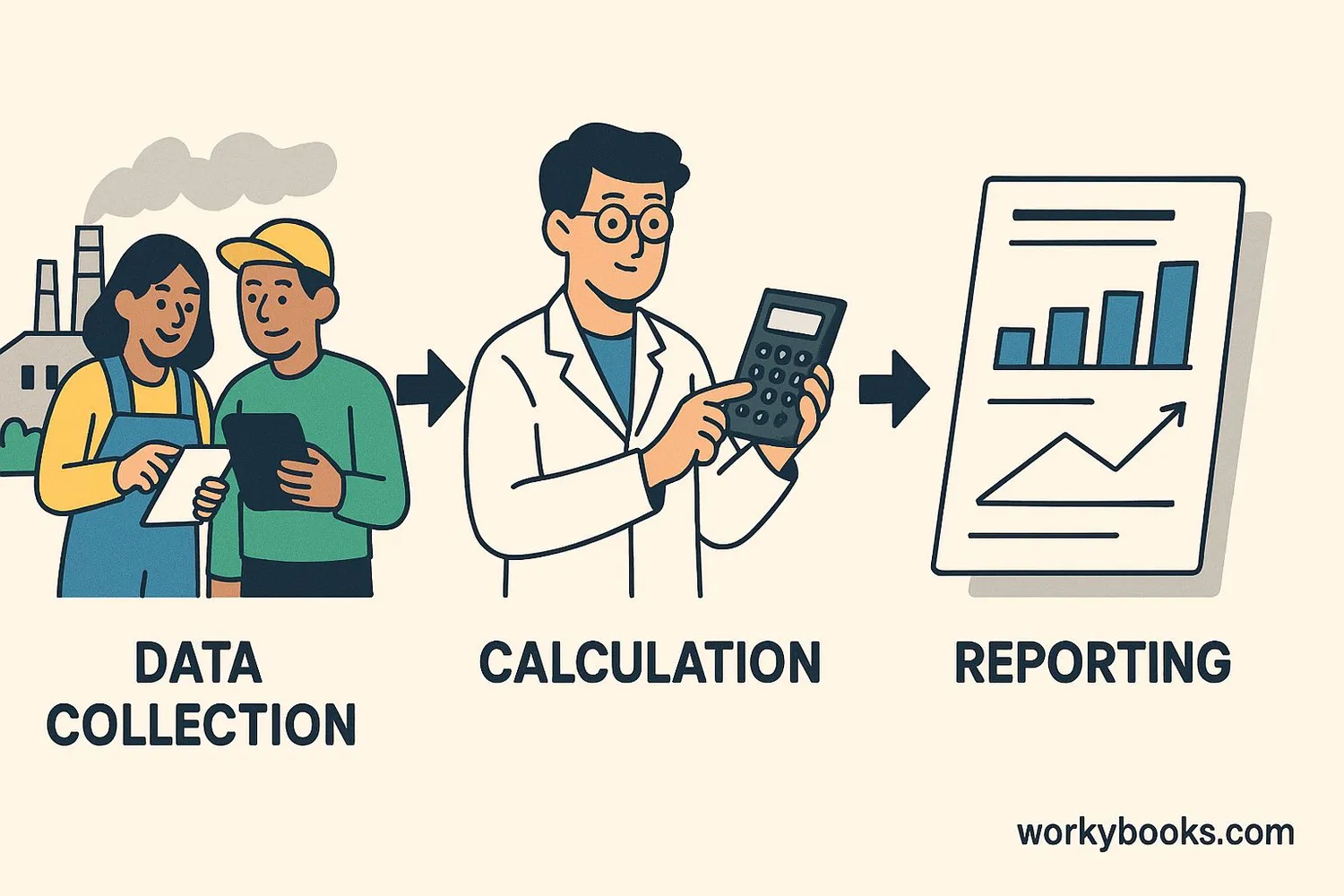Baseline Emissions - Definition, Examples, Quiz, FAQ, Trivia
Learn how we measure our environmental impact and work toward a cleaner planet
What Are Baseline Emissions?

Baseline emissions are like a starting point for measuring how much pollution we create. Imagine you're keeping track of how many cookies you eat each week. The first week's count would be your baseline. Similarly, baseline emissions measure the starting amount of greenhouse gases that a person, company, or country releases into the atmosphere.
These emissions come from many sources like cars, factories, and even the electricity we use at home. By knowing our baseline emissions, we can set goals to reduce them and track our progress in fighting climate change.
Key Fact
A carbon footprint is the total amount of greenhouse gases produced by our actions. Baseline emissions help us understand and measure this footprint!
Why Baseline Emissions Matter

Knowing our baseline emissions is crucial for several reasons:
Setting Goals
We can create realistic targets to reduce our carbon footprint
Tracking Progress
We can measure how much we've improved over time
Accountability
Companies and countries can show their commitment to sustainability
Climate Action
Helps scientists understand our impact on global warming
Example: If a city discovers its baseline emissions are 1 million tons of CO2 per year, it might set a goal to reduce this by 20% over five years. Each year, they can measure their progress against the baseline to see if they're on track.
How We Measure Baseline Emissions

Measuring baseline emissions involves several steps. Scientists and environmental experts use special methods called carbon accounting to calculate emissions accurately:
Data Collection
Gathering information about energy use, transportation, waste, and other activities that create emissions
Calculation
Using special formulas to convert activities into greenhouse gas amounts
Analysis
Comparing results to previous years and identifying major sources of emissions
The most common greenhouse gases measured include carbon dioxide (CO₂), methane (CH₄), and nitrous oxide (N₂O). These are converted into "carbon dioxide equivalent" (CO₂e) to make comparisons easier.
Fact: The Global Carbon Project estimates that human activities release about 40 billion tons of CO₂ into the atmosphere each year. That's like filling over 4 billion hot air balloons!
Baseline Emissions Quiz
Test your knowledge about baseline emissions with this quiz! Answer all 5 questions to see how much you've learned.
Frequently Asked Questions
Here are answers to common questions about baseline emissions:
Climate Science Trivia
Discover some fascinating facts about emissions and climate science:
Forest Power
One mature tree can absorb about 48 pounds of carbon dioxide per year. That means you'd need about 21 trees to offset the emissions from driving a car for one year!
Historical Measurement
Scientists can measure historical carbon levels by studying air bubbles trapped in ancient ice cores from Antarctica. These ice records go back over 800,000 years!
Space Monitoring
NASA has satellites that can measure carbon dioxide levels from space! The Orbiting Carbon Observatory-2 (OCO-2) maps human and natural carbon emissions worldwide.
Global Efforts
196 countries signed the Paris Agreement in 2015, pledging to reduce their greenhouse gas emissions. Each country established its own baseline to track progress toward climate goals.





